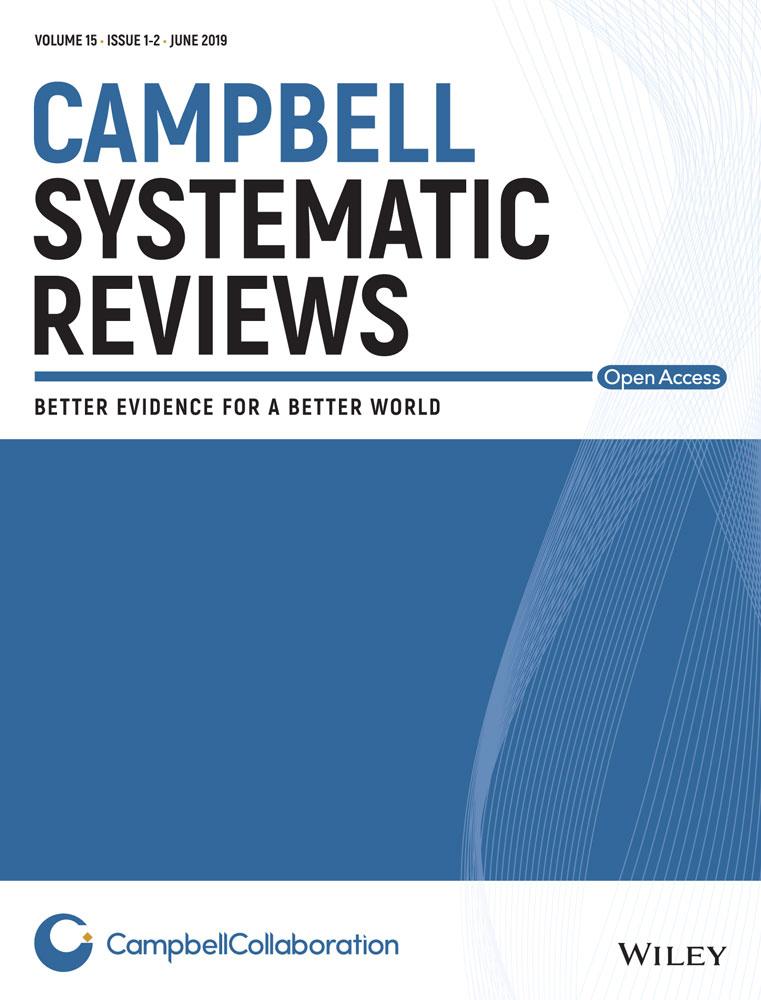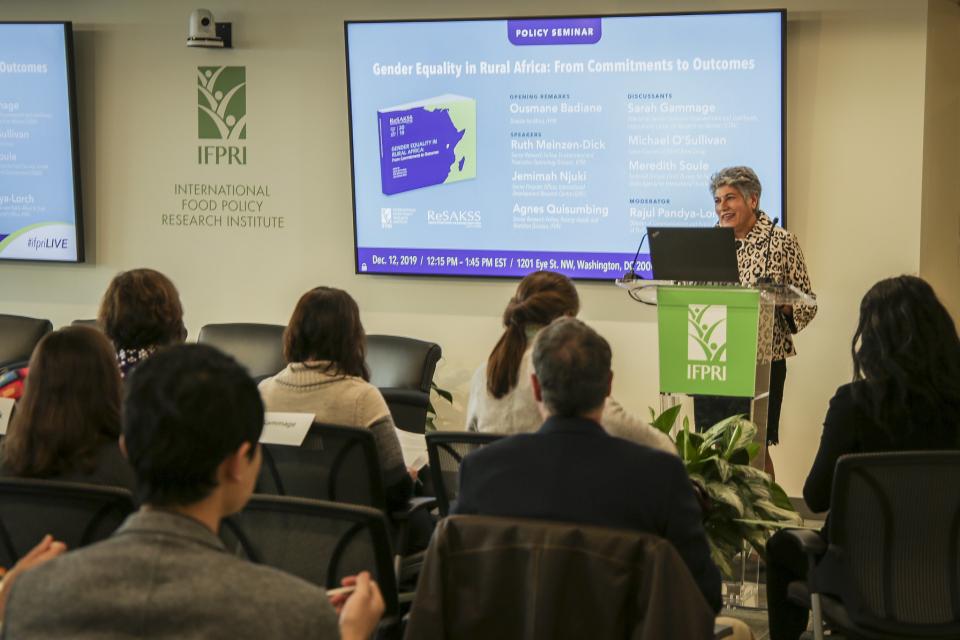The impacts of financial inclusion programs are small and variable

Photo: C. de Bode/CGIAR.
Key messages:
- Financial inclusion programs seek to improve the welfare of poor and low-income people by increasing their access to financial services such as loans, savings, insurance and money transfers.
- The impacts of financial inclusion programs are small and variable, and may be no better than those of comparable alternatives such as interventions to improve livelihoods. The evidence does not support the idea that financial inclusion programs transform people’s lives.
- The effects of financial services on core economic poverty indicators at the household level are small and inconsistent, and there is no evidence that behavior-change outcomes driven by financial inclusion programs lead to any positive effects.
- The effects of financial services on women’s empowerment appear to be generally positive. However, these positive impacts mostly depend upon program features other than the financial service itself—such as education about women’s rights, cultural and geographical factors, and which aspects of empowerment are considered when evaluating the program.
- As a silver lining, access to savings opportunities appears to have small but much more consistently positive effects for poor women and men and bears fewer risks than credit.
Financial inclusion programs are widely seen as an important tool in the quest to alleviate poverty and empower women. They seek to increase people’s access to financial services such as credit, savings, insurance and money transfers.
The benefits attributed to financial inclusion include improving the welfare of poor households by allowing them to grasp more opportunities, mitigate economic shocks and strengthen the voices of women.
Some advocates suggest that they also advance macroeconomic development which, in turn, is expected to benefit poor households. More recent studies have highlighted behavioral changes—such as improving financial knowledge or changing spending patterns—as impacts in their own right.
The evidence base is contested
The body of evidence to assess the impacts of financial inclusion programs has grown tremendously over the last decade, and systematic reviews now dominate the evidence landscape. They investigate economic, social, behavioral and gender-related outcomes.
However, they vary considerably in scope, scale and quality. This may lead to policymakers, researchers and practitioners focusing on specific aspects that suit their purposes rather than investigating the full picture.
To get a deeper understanding of the impact of financial inclusion programs, adopting Campbell Collaboration systematic review methods, we completed the first ever systematic review of reviews on the impact of financial inclusion, collecting and appraising all existing systematic reviews and meta-analyses on the topic. This work was carried out under the University of East Anglia and the Institute of Development Studies, with funding from the International Initiative for Impact Evaluation (3ie).
The impacts of financial inclusion programs are mixed
We identified 11 reviews that are of medium and high confidence. Taken together, they paint a nuanced picture of the impacts of financial inclusion programs. This is not surprising given large variation in service delivery modalities across programs, which leads to mixed impacts for people who may live and work in very different contexts.
Overall, we found that:
- Impacts are more likely to be positive than negative, but the effects vary, are often mixed, and appear not to transform women’s empowerment or reduce poverty in either scope or scale.
- Impacts largely occur in the early stages of accessing financial inclusion programs, such as changed behaviors or increased microentrepreneurship.
- However, the effects of financial services on core economic poverty indicators further along the causal chain—such as people’s incomes, assets and spending—are small and inconsistent.
- The effects on health and other social outcomes appear to be small or non-existent.
- There is no evidence that changes in behavior lead to any positive effects.
- The effects on women’s empowerment appear to be generally positive, but they depend on program features that are often peripheral to, or unrelated to, the financial service itself. They also depend on context and what aspects of empowerment are considered. Assessing women’s empowerment is confounded because studies conceptualize and measure women’s empowerment in different ways.
- Accessing savings products appears to have small but much more consistently positive effects for poor people and bears fewer risks for clients than accessing credit.
Overall, almost all the effects that were reported were very small and do not indicate transformative change.
Many effects had strong variations across studies; over time; and between places, populations, gender, ethnicity and interventions. This means that positive findings were generally not replicated from one context, intervention type or study to another. At least as many findings were mixed or inconclusive as were positive.
Moving forward: What aspects of financial inclusion programs work best for whom? Where and how they should be delivered?
The findings of this study did not come as a surprise to many, and contribute to a newfound realism among policymakers, practitioners and researchers who increasingly recognize that simply providing access to financial services does not transform people’s lives.
The solution is not to abandon programs that deliver financial assistance to the poor.
Instead, it is necessary to uncover what kinds of programs work best for whom and where, and how best to deliver them. The many valid alternatives to financial inclusion programming include a wide range of livelihood and graduation interventions that can deliver livelihood and empowerment impacts, but further evidence is also needed about many of them.
Our study uncovered a few gaps in evidence that are worth researching to improve financial inclusion programs offered to people in low- and middle-income countries. These include:
- assessing debt levels or patterns of indebtedness
- rigorously examining whether and how financial inclusion programs lead to macroeconomic development
- assessing the impacts of service- and amenity-financing programs (such as water-microfinance, sanitation loans or credit for microsolar systems) and the notion of “green microfinance” (providing financial services to improve environmental conditions).
- systematically exploring the area of digital financial inclusion, including mobile payments.
Suggested citation:
Duvendack, M., Mader, P. 2021. The impacts of financial inclusion programs are small and variable. CGIAR GENDER PLATFORM Evidence Explainer. Nairobi, Kenya: CGIAR GENDER Platform. https://hdl.handle.net/10568/114986
References
Impact of financial inclusion in low‐ and middle‐income countries: A systematic review of reviews. International Development, Methods
Duvendack, M., and P. Mader. 2020. “Impact of financial inclusion in low‐ and middle‐income countries: A systematic review of reviews. International Development, Methods.” Journal of Economic Surveys 34 (3): 594–629. https://doi.org/10.1111/joes.12367.

Impact of financial inclusion in low‐ and middle‐income countries: A systematic review of reviews. International Development, Methods.
Duvendack, M., and P. Mader. 2019. “Impact of financial inclusion in low‐ and middle‐income countries: A systematic review of reviews. International Development, Methods.” Oslo, Norway: Campbell Collaboration. https://doi.org/10.4073/csr.2019.2
Financial inclusion and microfinance
Mader, P., and S. Morvant-Roux. 2019. “Financial inclusion and microfinance.” In Handbook of Social Policy and Development, edited by Midgley, J., Surender, R., and L. Alfers, 411–30. Cheltenham: Edward Elgar. https://doi.org/10.4337/9781785368431.00030.


